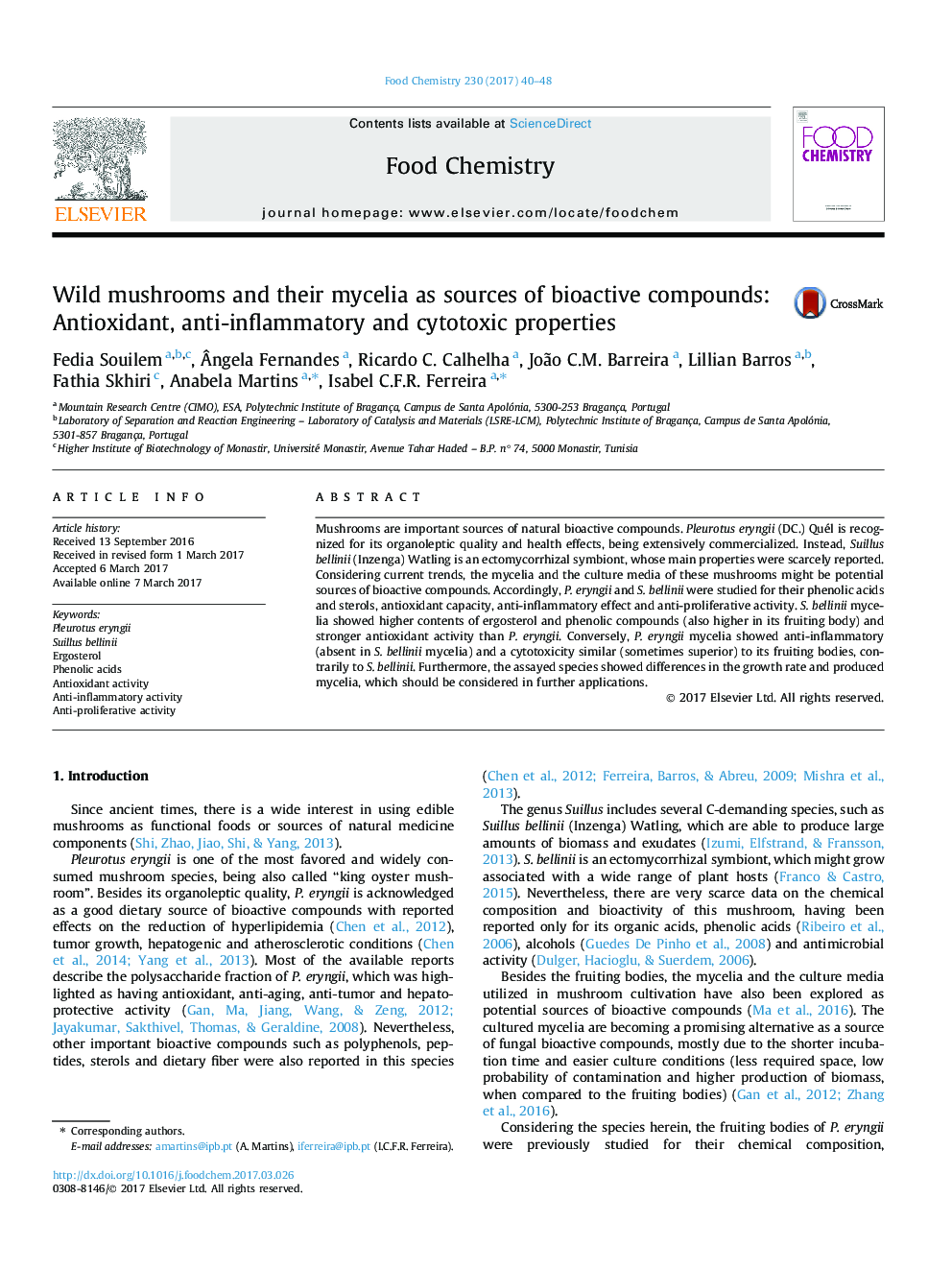| Article ID | Journal | Published Year | Pages | File Type |
|---|---|---|---|---|
| 5133182 | Food Chemistry | 2017 | 9 Pages |
â¢The culture components of P. eryngii and S. bellinii were thoroughly characterized.â¢S. bellinii showed the highest phenolic acids contents and antioxidant activity.â¢P. eryngii mycelia showed the highest anti-inflammatory and cytotoxic activity.â¢In some cases, mycelia and culture media gave better results than the fruiting bodies.
Mushrooms are important sources of natural bioactive compounds. Pleurotus eryngii (DC.) Quél is recognized for its organoleptic quality and health effects, being extensively commercialized. Instead, Suillus bellinii (Inzenga) Watling is an ectomycorrhizal symbiont, whose main properties were scarcely reported. Considering current trends, the mycelia and the culture media of these mushrooms might be potential sources of bioactive compounds. Accordingly, P. eryngii and S. bellinii were studied for their phenolic acids and sterols, antioxidant capacity, anti-inflammatory effect and anti-proliferative activity. S. bellinii mycelia showed higher contents of ergosterol and phenolic compounds (also higher in its fruiting body) and stronger antioxidant activity than P. eryngii. Conversely, P. eryngii mycelia showed anti-inflammatory (absent in S. bellinii mycelia) and a cytotoxicity similar (sometimes superior) to its fruiting bodies, contrarily to S. bellinii. Furthermore, the assayed species showed differences in the growth rate and produced mycelia, which should be considered in further applications.
